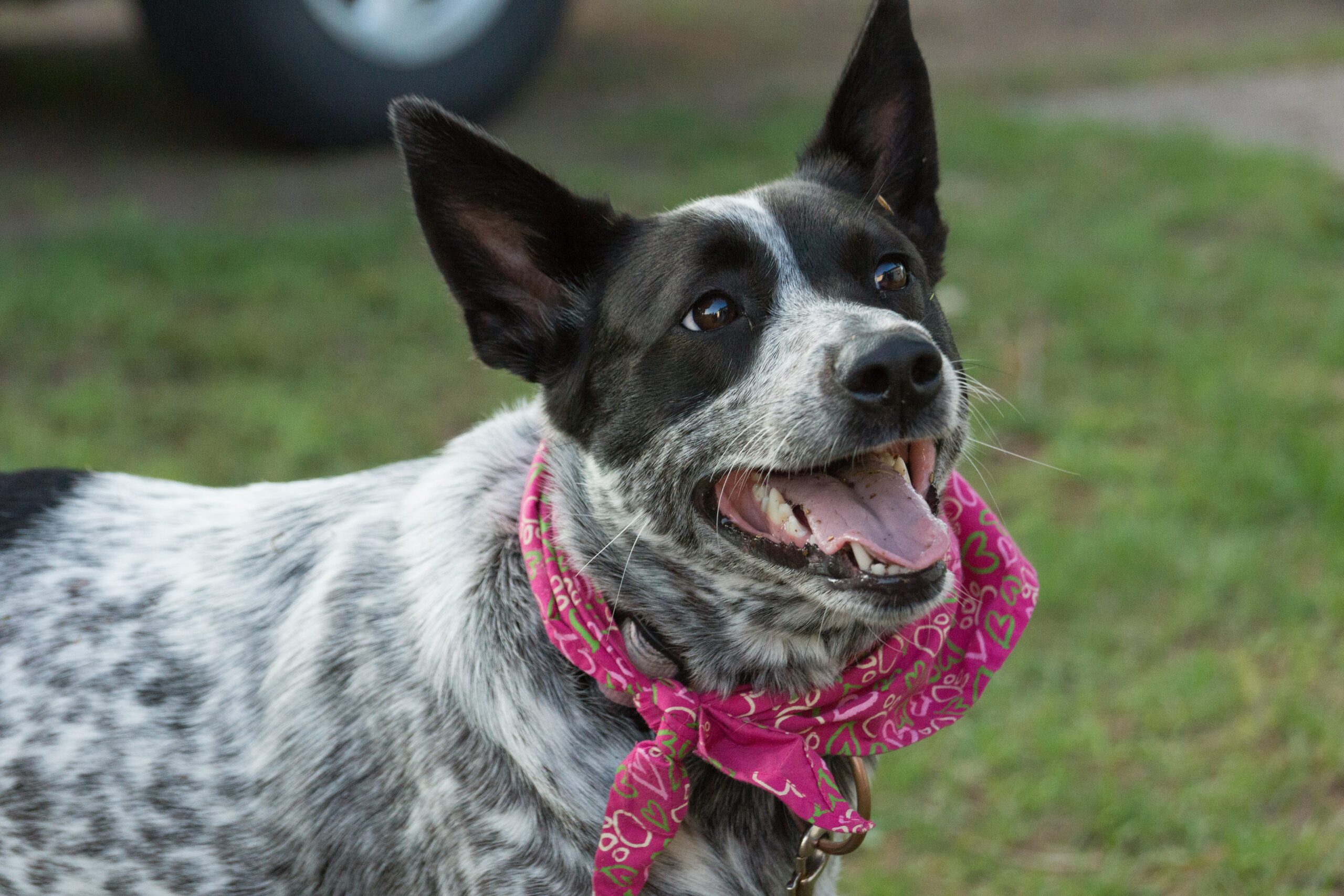Meet the Australian Cattle Dog, a remarkable blend of intelligence, energy, and sheer willpower wrapped in a striking coat. These dogs don’t just run; they dash with purpose, thrive on stimulation, and possess a knack for mastering tricks faster than you can say “fetch!” But don’t let their rugged looks fool you; beneath that sturdy exterior lies a loving companion yearning for connection. So, whether you’re on the fence about adopting or seeking tips for a seamless experience, buckle up! This guide will reveal everything you need to know about these versatile canines.
Overview of the Australian Cattle Dog
Let’s dive into the world of the Australian Cattle Dog—a breed that’s as dynamic as a summertime thunderstorm! Born from the rugged Australian outback, this striking dog is not just a pretty face.
Key Traits of the Australian Cattle Dog:
- Intelligence: These dogs are brainiacs! They excel in obedience and easily grasp new commands.
- Agility: With boundless energy, they can navigate rough terrains like they’re born to prance.
- Loyalty: If you’re in need of a faithful friend, look no further. This breed forms unbreakable bonds with their humans.
Thanks to their herding background, the Australian Cattle Dog has a strong instinct for work. But they’re also fantastic family pets—provided their energy levels find a suitable outlet. Whether it’s fetch, agility training, or simple companionship, this breed thrives on activity and engagement.
So, if you’re ready to add some agile enthusiasm to your life, prepare for an incredible journey with your Australian Cattle Dog. They’re not just dogs; they’re driving forces of joy and adventure!
Physical Characteristics and Appearance
The Australian Cattle Dog is much more than just a pretty face; they’re the whole canine package! From their sturdy build to their dazzling coat, here’s what really stands out:
- Size: Medium-sized, typically weighing between 30-50 pounds.
- Coat: Short, dense, and weather-resistant—perfect for those rugged Aussie landscapes.
- Color: Commonly seen in blue or red speckle, they can sometimes exhibit a stunning solid color with beautiful markings.
| Feature | Details |
|---|---|
| Height | 17-20 inches (43-51 cm) |
| Ears | Erect, often shaped like triangles |
| Eyes | Almond-shaped, usually dark and expressive |
With their taut muscles and agile bodies, Australian Cattle Dogs are built for action—no couch potatoes here! Add those charming, alert expressions, and you’ve got a dog that’s as beautiful as it is capable. Plus, it’s hard not to admire the mechanical precision they display while herding livestock or engaging in playful antics. Truly, these dogs are the definition of versatility!
Temperament and Behavior Traits
The Australian Cattle Dog is not just a pretty face; they pack a punch with their personality, too! Known for their intelligence and loyalty, these dogs are energetic, alert, and downright quirky. Here’s a deeper dive into what makes their temperament truly unique:
- Loyal Companions: The Australian Cattle Dog forms strong bonds with their families. Expect plenty of snuggles and protectiveness.
- Quick Learners: Their brainpower is off the charts! This breed thrives on mental stimulation and tends to pick up commands faster than you can say “fetch.”
- Energetic Adventurers: These dogs need exercise, and not just a casual stroll. They need vigorous play sessions or your shoes might become their chew toys!
- Herding Instincts: As descendants of herding breeds, they often exhibit strong protective behavior, which can lead them to herd others—kids, pets, or even unsuspecting guests!
- Independent Thinkers: While eager to please, Australian Cattle Dogs can also be quite stubborn. Consistent, positive training works best.
In summary, with their spirited nature and intelligence, owning an Australian Cattle Dog means embracing a lively adventure every day!
Understanding the High Energy Levels
If you’re considering an Australian Cattle Dog, buckle up for a high-octane adventure! These furry dynamoes are not just cute faces; they come equipped with unstoppable energy levels that can rival a toddler on a sugar rush. Here’s what you need to know:
- Exercise Requirements: Aim for at least 1-2 hours of vigorous activity daily. Think long walks, intense play sessions, or even agility courses to keep your Australian Cattle Dog happily engaged.
- Mental Stimulation: Given their intelligence, these dogs thrive on problem-solving activities. Try puzzle toys or training games to keep their minds sharp and focused.
- Signs of Boredom: A bored Australian Cattle Dog can turn your living room into their personal demolition zone. Watch out for:
- Excessive barking
- Chewing furniture or shoes
- Digging in the yard
- Daily Challenges: Incorporate fun challenges into each day. Consider:
- Fetch: It’s a classic for a reason!
- Obstacle courses: Set up a mini agility course in your backyard.
In short, an Australian Cattle Dog needs a lifestyle that keeps them not just moving but also mentally stimulated, ensuring a happy and well-adjusted pup!
Training Techniques for Australian Cattle Dogs
Training your Australian Cattle Dog can feel like preparing for a game of chess—strategic moves are essential! These intelligent pups crave mental stimulation, which makes training not only a necessity but a fun endeavor. Here are some effective techniques to get you started:
- Start Early: Begin training as a puppy; they are natural learners and absorb information like sponges.
- Positive Reinforcement: Use treats, praises, and belly rubs. Nothing beats showing them that good behavior equals rewards!
- Consistency is Key: Always use the same commands for specific actions. For example, if “Sit” means to sit, use it every time—no mix-ups allowed!
- Short Sessions: Keep training sessions brief (5-10 minutes) to hold their focus and prevent boredom.
- Socialization: Expose your Australian Cattle Dog to various environments, people, and other pets. It builds confidence and curiosity.
- Mental Challenges: Engage them in puzzle toys or agility courses. These activities satisfy their need for exercise and keep their minds sharp.
In conclusion, a well-trained Australian Cattle Dog is not just obedient; they’re an absolute blast to have around!
Health Considerations and Common Issues
When it comes to the Australian Cattle Dog, keeping an eye on their health is essential. These energetic pooches may be full of life, but they can also face their fair share of health hurdles. Here are some top health considerations to watch for:
- Hip Dysplasia: A genetic issue that impacts joint health. Regular vet check-ups can help in early diagnosis.
- Deafness: Some Australian Cattle Dogs are prone to hearing issues—especially if they have a merle coat.
- Eye Conditions: Keep an eye (pun intended) out for progressive retinal atrophy and cataracts, which can affect their vision over time.
- Skin Allergies: Watch for itching or irritation, as they can be prone to allergies.
Quick Health Checklist:
| Health Concern | Prevention Tips |
|---|---|
| Hip Dysplasia | Maintain healthy weight and regular exercise |
| Deafness | Genetic testing if you’re breeding |
| Eye Conditions | Regular vet exams and eye checks |
| Skin Allergies | Use hypoallergenic products and limit outdoor allergens |
By being proactive about these concerns, your Australian Cattle Dog can thrive and remain your energetic companion for years to come!
Nutritional Needs and Feeding Guidelines
Feeding your Australian Cattle Dog (ACD) is like fueling a high-performance engine; you want the best for top-notch performance. These energetic pups require a balanced diet tailored to their unique needs. Here’s a straightforward guide to keep your ACD in tip-top shape:
- High-Quality Protein: Since Australian Cattle Dogs are active, they need protein-rich foods. Look for:
- Chicken
- Beef
- Fish
- Complex Carbohydrates: Energy is key! Incorporate:
- Brown rice
- Sweet potatoes
- Barley
- Healthy Fats: Don’t forget those omega-3s! They support skin and coat health.
Feeding Guidelines:
- Age Matters:
- Puppies need 3-4 meals a day.
- Adults thrive on 2 meals per day.
- Portion Control: Avoid overfeeding; monitor your dog’s weight regularly.
- Fresh Water: Always have it available. Hydration is essential, especially after play!
In summary, a proper diet ensures your Australian Cattle Dog remains energetic, playful, and healthy. Happy feeding!
Creating an Enriching Environment for Your Dog
To ensure your Australian Cattle Dog thrives, creating an enriching environment is paramount. Forget about a boring backyard! Here’s how you can spice things up for your energetic companion:
- Interactive Toys: Equip your home with toys that challenge your cattle dog’s intellect. Think treat-dispensing puzzles or tug-of-war devices—great for keeping boredom at bay.
- Structured Activities: Go beyond your average walk. Incorporate:
- Agility Courses: Set up a mini obstacle course to hone their instincts and physical prowess.
- Fetch and Retrieve: An Australian Cattle Dog loves a good game of fetch. This combines exercise and mental stimulation.
- Social Interactions: Dogs are social creatures. Facilitate meet-ups with other dogs or engage in puppy playdates to keep your cattle dog’s social skills top-notch.
- Training Sessions: Regular training not only reinforces good behavior but also provides mental stimulation. Short, fun sessions work wonders!
By incorporating these elements, you’ll transform your living space into a lively playground for your Australian Cattle Dog, helping them stay happy and engaged. After all, a tired cattle dog is a well-behaved cattle dog!
Creating an Enriching Environment for Your Dog
Let’s face it—an Australian Cattle Dog isn’t exactly a couch potato! So, to keep your energetic furball happy, you need to craft an enriching environment. Here’s how:
- Exercise: Daily walks and playtime are must-haves. Consider games like fetch or agility training. The more they move, the happier they are!
- Mental Stimulation: Keep their smart brains engaged. Puzzle toys, scent games, and training sessions are great options.
- Safe Space: Create a cozy nook where your Australian Cattle Dog can relax after a day of shenanigans. A comfy bed and some soft toys can work wonders.
- Socialization: Encourage positive interactions with other dogs and people. Dog parks or playdates can soothe their social needs, decreasing anxiety.
- Varied Activities: Rotate toys and activities to prevent boredom. A new ball here and a tricky toy there keep life exciting!
In short, an enriching environment not only promotes physical health but also nurtures the happy spirit of your Australian Cattle Dog. With the right setup, your furry friend will be bouncing with joy!
Creating an Enriching Environment for Your Dog
Keeping your Australian Cattle Dog stimulated is crucial for their overall happiness and well-being. These intelligent and energetic furballs thrive in an environment that offers both mental and physical challenges. Here’s how to craft an engaging space for your pup:
- Interactive Toys: Invest in puzzle toys or treat dispensers. They provide your Australian Cattle Dog with a fun way to work for their treats and stimulate their minds.
- Agility Courses: Consider setting up a mini-agility course in your backyard. Just a few jumps and tunnels will work wonders to burn off all that energy.
- Daily Outings: Regular walks, runs, or trips to the dog park will help satisfy their active nature. Remember, a tired Australian Cattle Dog is a happy one!
- Training Sessions: Incorporate short obedience and trick-training sessions into their routine. This not only reinforces their training but keeps them mentally sharp.
- Socialization Opportunities: Have playdates with other dogs or visit a dog-friendly café. This builds their confidence and helps prevent behavioral issues.
Creating an enriching environment isn’t just beneficial; it’s essential for your Australian Cattle Dog’s health and happiness! 🐾
Frequently Asked Questions
What makes the Australian Cattle Dog such a versatile breed?
The Australian Cattle Dog, often affectionately known as the “blue heeler,” is like the Swiss Army knife of dog breeds. Their intelligence, agility, and herding instincts make them excellent companions for a variety of activities, from herding livestock to participating in dog sports like agility and obedience. They’re also highly trainable and love to be mentally stimulated, which means they can leap from being a loyal family pet to a top-notch working dog faster than you can say “fetch”!
How can I effectively train my Australian Cattle Dog?
Training an Australian Cattle Dog is akin to coaching a sports team made up of overachievers! Start with clear commands and positive reinforcement techniques—think treats, praise, or even a raucous game of tug-of-war when they get it right. Consistency is key; these pups thrive on routine and will pick up on your signals faster than you can finish your coffee. Remember, mental stimulation is just as important as physical exercise for this energetic breed, so mix in plenty of play sessions to keep them engaged.
What are the best care tips for an Australian Cattle Dog?
Caring for your Australian Cattle Dog is like giving your kids the best toys—you want them to thrive! A balanced diet rich in quality protein will keep their energy levels high, especially since they’re natural athletes. Regular exercise is a must—think brisk walks, runs, or even a game of fetch. Grooming-wise, their short coat only requires a weekly brush to keep it shiny and healthy. And let’s not forget about their mental needs; puzzle toys or training sessions can provide a much-needed brain workout!
Are Australian Cattle Dogs good with kids and other pets?
Absolutely! With the right introductions and training, Australian Cattle Dogs can be great furry siblings for kids and other animals. They possess a natural protective instinct, which means they often take on the role of guardian for the little ones in the house. However, since they’re herding dogs, they might also try to herd the kids or other pets as part of their playful nature. Socialization from a young age, along with supervised playtime, can help ensure they’re well-rounded family members.



